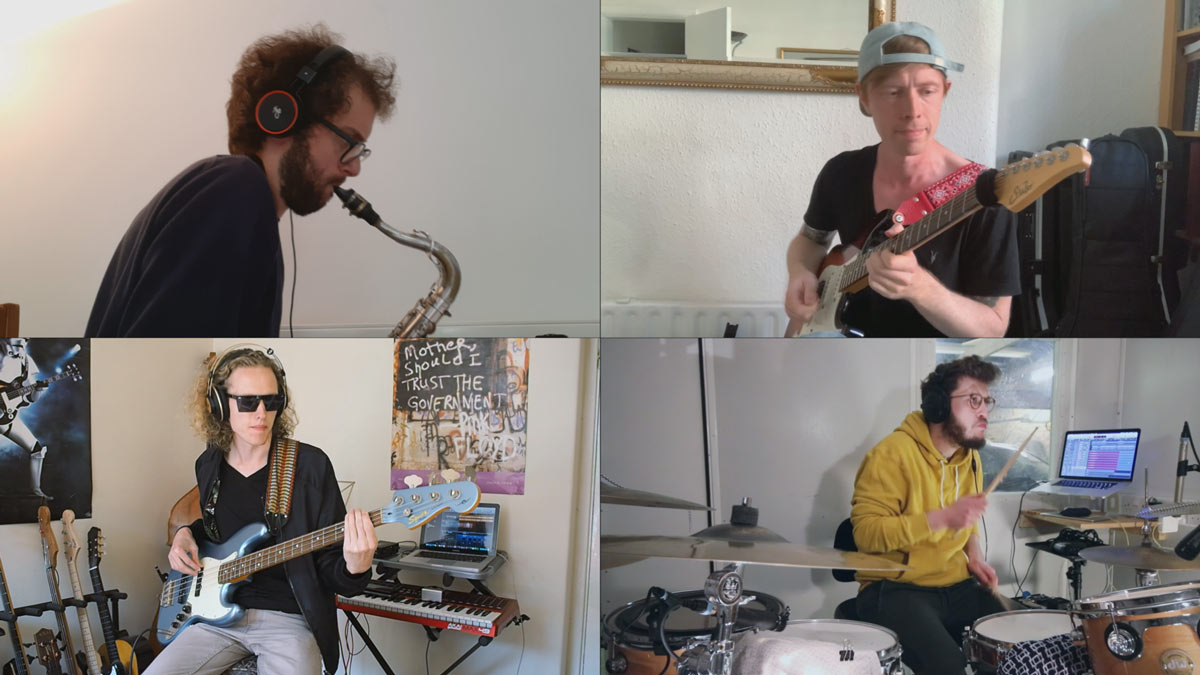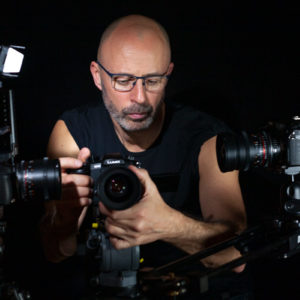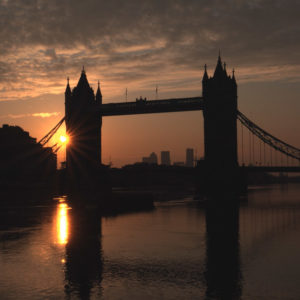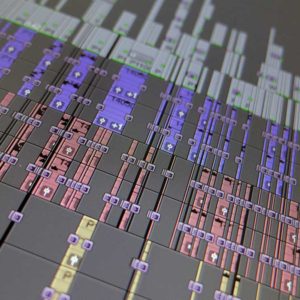Even in isolation or lockdown, a music video production can still be created by collaborating with other musicians and artists that are not with you. Using a recent music video that I edited together as a case study, I explain some tips about what to consider when making this kind of music video production.

Producing music videos in isolation
Even when not playing in the same room musicians can film themselves (or have themselves filmed) individually playing or singing to the same track. These visuals can then be synced up and edited together to the master sound mix resulting in a high-quality, affordable music video where everyone features. For this case study that I edited for guitarist and music teacher Joe Perkins, I received a video of each musician playing a track that they had each filmed themselves at their home using their camera phones while in isolation. I then synced up each of the visuals to the master music mix and then edited the visuals in a way to suit my client. This process worked very well in this case study, as all the visuals blended well together when edited. Having edited the music video for Joe and his bandmates, I thought it would be helpful to list some tips for anyone who would like to make a music video production either collaborating remotely or working in isolation.
Playing to the master track.
Before you start filming, make sure all the artists performing have the same master track to either play or sing along to. Even though the final track might still undergo further mixing after the performance, the duration and beats and body of the song must remain identical so that it can all sync up with the performance.
Setting the camera frame rate.
For best results, everyone taking part in the music video would ideally make sure that each camera is set to the same frame rate which is selectable in your camera settings, i.e. 25 frames per second (fps) or 30 fps. Depending on the camera or camera phone you are using will depend on what settings and options are available. My current iPhone 6S can only film at 30 fps or 60 fps. To get an iPhone to film at 24fps or 25 fps, you need to install a third-party app like FiLMiC Pro (for £15 other filming apps are available) and then adjust the app settings. Ensuring everyone is filming at precisely the same frame rate whether 24, 25 or 30 helps avoid any frame rate conversion in post-production, which can result in less sharp images.
Other camera settings
Filming at the highest resolution quality possible helps enable a higher quality recorded visual and more options in post-production. So 4K (4096 x 2160 pixels) or UHD (Ultra High Definition 3840 x 2160) would be better than the lower resolutions of HD 1080 (1920 x1080) or 720 (1280 x 720). Filming at the largest aspect ratio would require more storage space, so make sure you have plenty of available space on your device before starting. Also, consider that it all might take longer then you imagine or that you might like to film many different takes. This will mean you might need to plug a phone into the mains while filming or have enough battery power for the filming session.
Setting the camera focus.
Ideally, you would want to film with manual focus. In this case study, I could see that the bass guitarist was most likely filming with autofocus. As he moves his bass guitar, you can occasionally see the camera focus hunting. By using the manual focus option of your camera or the FiLMic Pro app, you can set the focus to one position so that it does not change for the duration.
Lighting for filming
Good lighting is essential for filming a video so you might want to play around and film some test shots beforehand to see which aspect of your location enables you to film your best lit self. Perhaps this may vary depending on the time of day if you are using natural sunlight. For perfect results, make sure the lighting situation remains constant for your filming session, so avoid using the light from sunny windows on cloudy days or when the light (and colour temperature) is changing quickly. Check out my guide lighting for filming.
Sound recording
So that any filming can be synced easily you will need to record the audio of the master track and or the performance with the filming. The master mix could be played on speakers close to the camera and would need to be recorded very clearly by the camera. Filming in a silent or quiet location will help the performance or the music be recorded clearly, and then this will enable quick and easy syncing. Before you start to record film a test and play it back to make sure your camera is recording the sound properly.
Visual aesthetics
Consider the overall visual aesthetic of the video you are creating well ahead of filming. What backgrounds are you using? Will they match with any others? What are you wearing? Does that need to be similar or different to anyone else appearing? In addition consider the framing and your position in the frame, along with that of anyone else.
Filming different angles
When you film, make sure to perform and record the track from start to end so that it’s quicker to sync it up in the edit. Consider filming more than one angle, i.e. a wide-angle and a different angled closer shot perhaps of your hands. More angles and differently framed shots can add visual interest and make your music video more dynamic. You might need to use a suitable camera tripod or camera holder that enables you to secure your camera in different positions.
Editing performances
Once all the performances have been filmed, they can then be transferred to a music video editor and synced up. It’s always best practice to keep at least one copy of all digital media on a separate drive or device for safety. Creative decisions can then be discussed as to how the visuals might work best for what has been filmed. In this case study, I created a Zoom looking effect. Throughout the video, I’ve then edited the best parts of each performance and shown them as a full-frame image. This combination works very well for this video though of course, many different styles could also be edited from the same footage. Once the music video production is signed off editing wise, the final music could undergo further mixing to suit the visuals if required.
If you would like any help with your Lockdown music video production or music video editing, please do get in touch. You might also be interested in reading these helpful blog articles:



